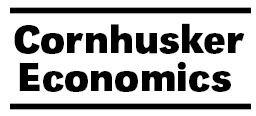Agricultural Economics, Department of

Cornhusker Economics
Date of this Version
5-11-2022
Document Type
Newsletter Issue
Citation
Cornhusker Economics, May 11, 2022
agecon.unl.edu/cornhuskereconomics
Abstract
Farmers and ranchers face many risks and challenges in production agriculture every day. Changing market fundamentals, farm policy reforms, and crop insurance program developments defined the risk environment that led to the authorization of agricultural risk management education as part of the Agricultural Risk Protection Act of 2000. The educational efforts that have followed have been designed to help producers manage the full range of production, marketing, financial, legal, and human risks that are all part of agriculture. In the more than two decades since, the risks facing producers have continued to grow. Producers managed through both the opportunities of the bioenergy and agricultural commodity boom cycle and the economic challenges of the Great Recession in the late 2000s. They then coped with drought losses in 2012, storms and flooding extremes in 2019, and more storm, drought, and wildfire losses since. To top it off, everyone has had to manage through the challenges and market shocks of trade conflicts since 2018, COVID disruptions since 2020, and now the global supply shocks and security concerns of the ongoing Russia- Ukraine conflict. Add in other market shocks and volatility, policy changes, and supply chain disruptions and producers have had to manage a wide range of risks. A substantial market rally for many commodities since 2020 has provided for a strong farm economic outlook at present, but risks and uncertainty remain high, and managing those risks will continue to be a major challenge for farmers and ranchers. Educating producers to manage risk and position their farm or ranch for future growth and success is the fundamental purpose of the Extension Risk Management Education (ERME) program.


Comments
Copyright © 2022 University of Nebraska